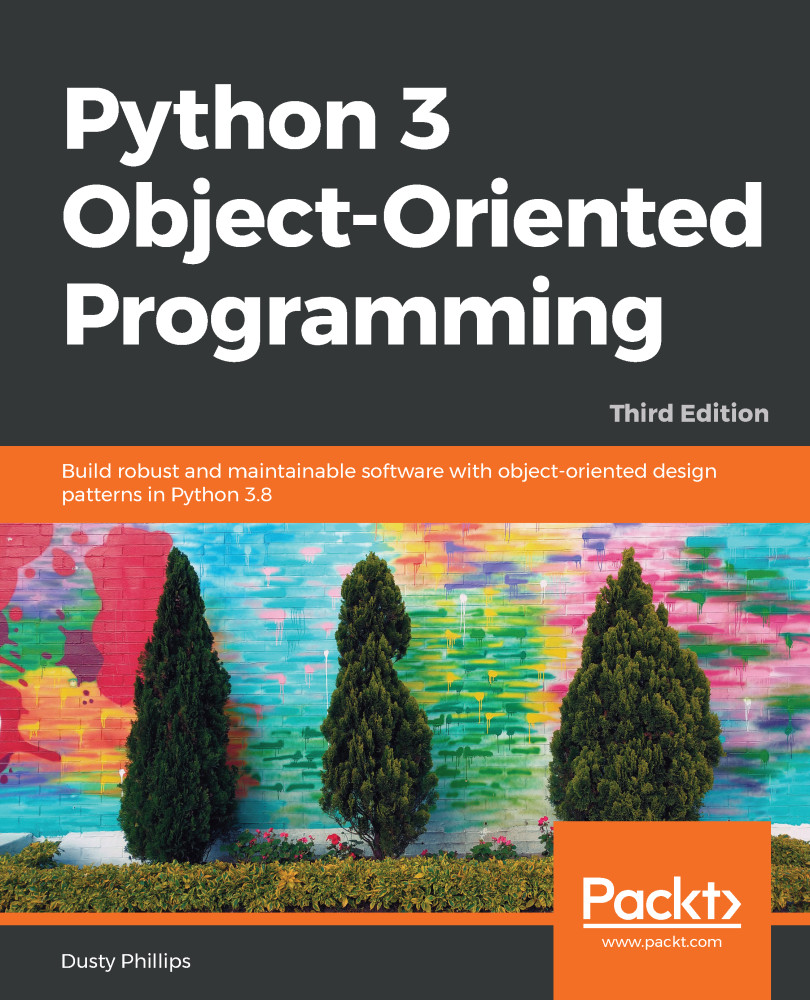Programming languages that overemphasize object-oriented principles tend to frown on functions that are not methods. In such languages, you're expected to create an object to sort of wrap the single method involved. There are numerous situations where we'd like to pass around a small object that is simply called to perform an action. This is most frequently done in event-driven programming, such as graphical toolkits or asynchronous servers; we'll see some design patterns that use it in Chapter 10, Design Patterns I, and Chapter 11, Design Patterns II.
In Python, we don't need to wrap such methods in an object because functions already are objects! We can set attributes on functions (though this isn't a common activity), and we can pass them around to be called at a later date. They even have a few special properties that can...


